Birth name Ivie Anderson Instruments Vocals Movies A Day at the Races Occupation(s) Singer Role Singer | Name Ivie Anderson Also known as Ivy Anderson | |
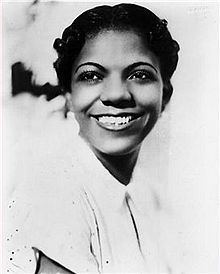 | ||
Born July 10, 1905Gilroy, California, United States ( 1905-07-10 ) Died December 28, 1949, Los Angeles, California, United States Similar People Duke Ellington, Rex Stewart, Sonny Greer, Johnny Hodges, Harry Carney | ||
Duke ellington orchestra feat ivie anderson i m satisfied 1933
Ivie Anderson (sometimes Ivy) (July 10, 1905 – December 28, 1949) was an American jazz singer. She enjoyed success during the 1930s, touring and recording with the band of Duke Ellington. Anderson retired from singing in her late 30s due to poor health, and she died a few years later.
Contents
- Duke ellington orchestra feat ivie anderson i m satisfied 1933
- Ivie anderson when my sugar walks down the street
- Personal life
- Shuffle Along
- Duke Ellingtons band
- Discography
- References
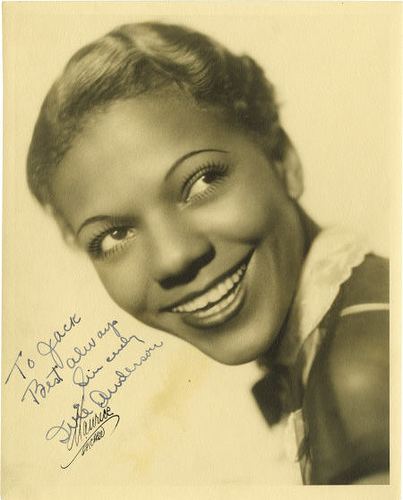
Ivie anderson when my sugar walks down the street
Personal life
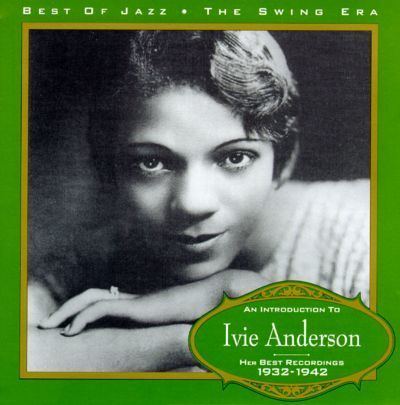
Anderson was born in Gilroy, California. Though her mother's name is unknown, her father was Jobe Smith. Anderson lived at 724 E. 52nd Place, Los Angeles, from 1930 to 1945, now part of the 52nd Place Historic District. From age nine to thirteen, Anderson attended St. Mary’s Convent and studied voice. At Gilroy grammar and high school, she joined glee club and choral society. She also studied voice under Sara Ritt while in Nannie H. Burroughs Institution in Washington D.C.
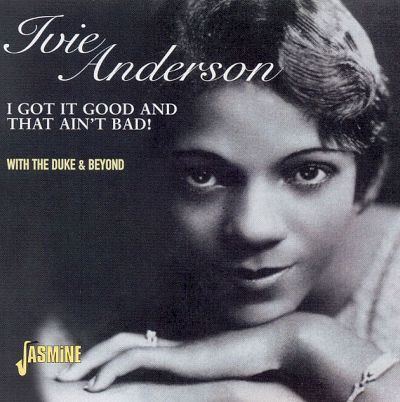
Although specific dates of events in Anderson's life were unknown, she opened Ivie's Chicken Shack in Los Angeles alongside Marque Neal after they had married but sold the business when they divorced. She had a second marriage with Walter Collins but no children.
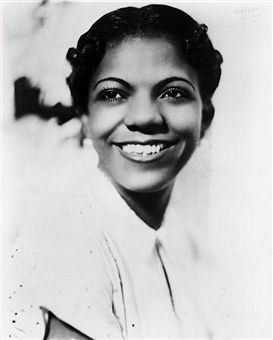
After suffering for years from asthma, Ivie Anderson died in Los Angeles, California. Though her earliest obituary was dated as December 27, 1949; all other sources state her date of death as December 28, 1949. She is interred in Angelus-Rosedale Cemetery.
Shuffle Along
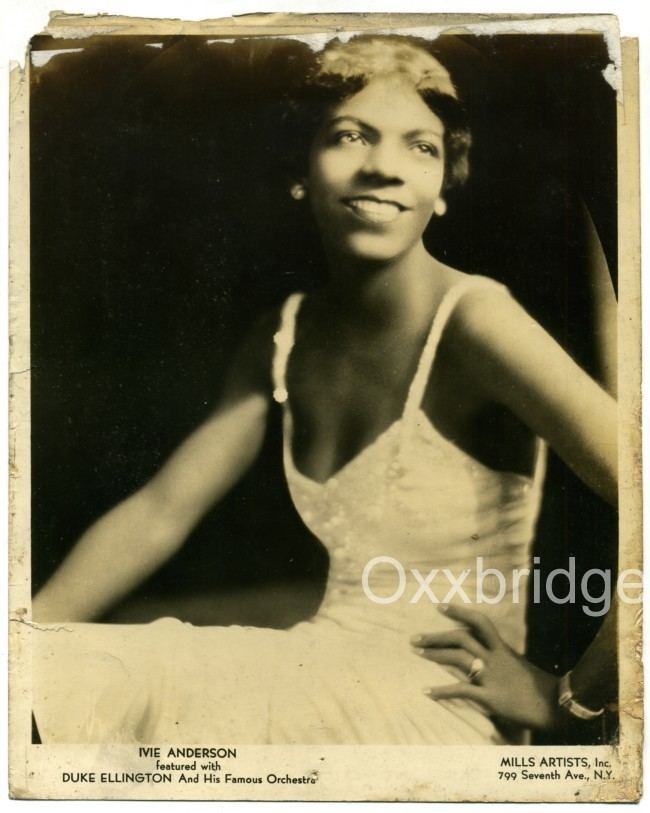
Anderson’s singing career officially started around 1921 when she performed in Los Angeles, California. From 1922 to 1923, she was brought to New York City by joining a pioneering African-American musical revenue Shuffle Along. By 1924 and 1925, she had already performed in various locations such as Cuba, the Cotton Club in New York City, and Los Angeles with the bands of Paul Howard, Curtis Mosby, and Sonny Clay. In 1928, she sang in Australia with Clay’s band and starred in Frank Sebastian's Cotton Club in Los Angeles in April. Soon after, she finally began touring in the United States as a solo singer.
Duke Ellington's band
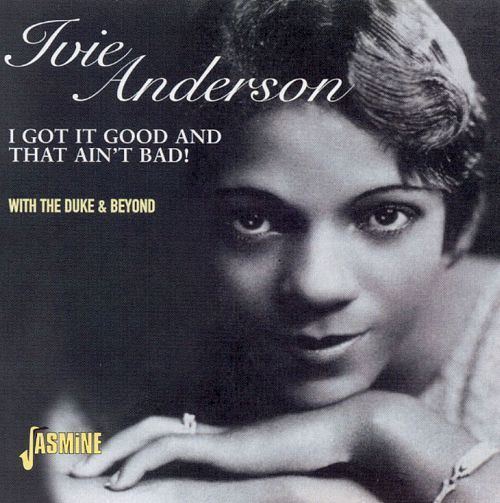
From 1930 to early 1931, Anderson spent twenty weeks at the Grand Terrace in Chicago, Illinois, with pianist Earl Hines’s band. In February 1931, she officially joined Duke Ellington’s orchestra band. Anderson’s singing career for the next dozen years was mainly based on touring in various areas within the United States alongside Ellington’s band. She sang in Ellington’s first European performance in 1933. (Prior to Ellington signing Anderson, he had never had a regular vocalist. The records he recorded prior to 1931 with vocals were made up of Ellington's musicians, freelance vocalists or vocalists supplied by the record company at the time of the session. Manager Irving Mills sang on a handful of sides, as well.)
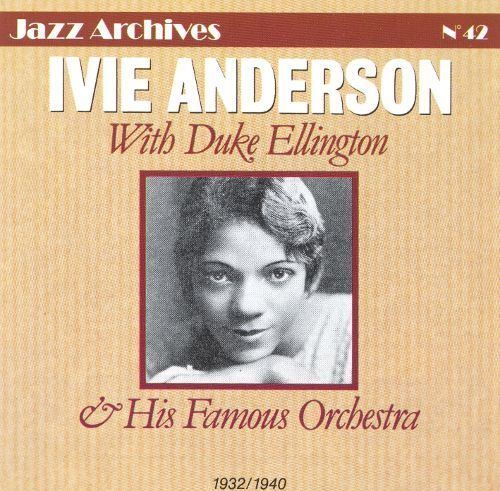
Distinguished jazz critic Nat Hentoff described Anderson as "easily the most sensitive and musical female vocalist Ellington ever had". She "sang with a simplicity ... so artless that she is ... remarkably neglected in ... writings about jazz." She "sang with a supple warmth and caressing beat that made her one of the unforgettable voices in Jazz." He also calls her "direct, completely unpretentious and ungimmicked".
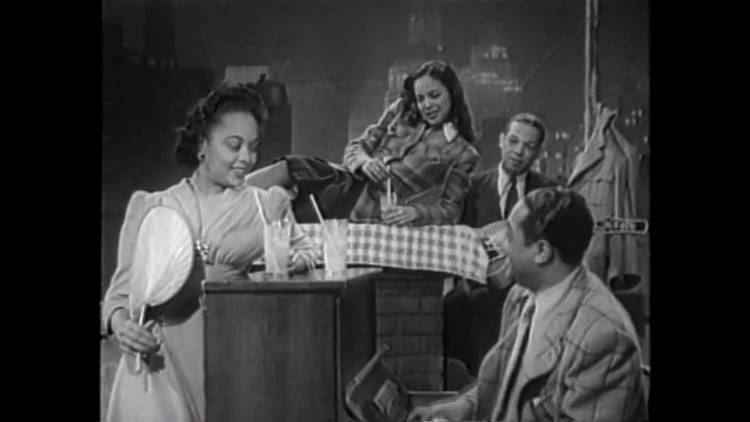
Anderson was very popular as an entertainer with Ellington as well, often receiving prominent billing on advertisements for Ellington's appearances in theatres, auditoriums, arenas and ballrooms, wherever the Ellington band toured in the 1930s. She had become the band's scat singer, imitating instrumental sounds and various vocalizations. Later on, she even began singing lively pop tunes and ballads, which became her signature singing style. She was said to be one of Ellington's finest and most versatile singer after the Swedish vocalist, Alice Babs who also sang in his band. Ellington also wrote Music Is My Mistress (1973) with Anderson in mind.
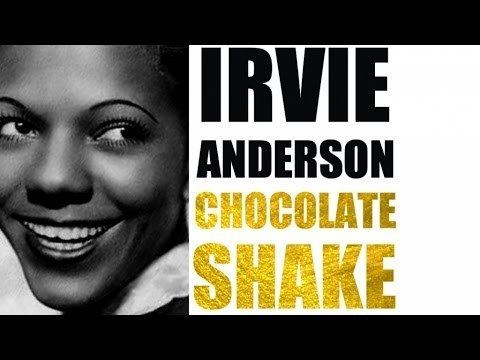
When she played in Ellington's musical Jump for Joy, the California Eagle wrote of her: "Ivie can sing a song so that the audience get every word, and at the same time make cracks at Sonny Greer, tease Duke and wink at the boys in the front row. Wednesday night she went into a dance routine that would have slayed you." Her performance of "Stormy Weather" in the movie short Bundle of Blues (1933) was only eclipsed by the later and far better-known version sung by Lena Horne in Horne's later movie with that title (1943). Ellington's indifference towards vocalists changed with the hiring of Anderson, who was generally considered the best regular vocalist he ever employed. She also appeared as a singer in the Marx Brothers movie A Day at the Races (1937) and the same year in Hit Parade of 1937 (as Ivy Anderson). Due to chronic asthma, Anderson left Ellington's band in 1942.
Discography
Ellington songs featuring Anderson include:
